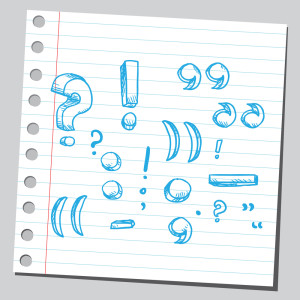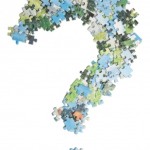 Last week we looked at some of the most commonly used elements of punctuation and how they are used. But our punctuation, grammar and language toolkit has a lot more in it. Ellipsis …, italics, (parentheses), “scare quotes” and bold-face are the most frequently used ways to enhance the written message.
Last week we looked at some of the most commonly used elements of punctuation and how they are used. But our punctuation, grammar and language toolkit has a lot more in it. Ellipsis …, italics, (parentheses), “scare quotes” and bold-face are the most frequently used ways to enhance the written message.
The Ellipsis—the three little dots that follow a phrase is used for two reasons. The first is to indicate words missing … from a quoted passage. The second use is to trail off in an intriguing manner … This invites the reader to use his or her imagination to complete the thought. If this is exactly what you intend then by all means, insert the ellipsis. Be careful not to use the ellipsis … instead of dashes … as this can be quite irritating.
Italics can be very effective if conveying an emphatic thought but quickly lose their force if overused. Ideally, only one to three words at a time should be italicized, rarely a whole sentence, and never an entire paragraph. Think carefully about using italics to convey the intended feeling. Instead, try to pick the best possible words themselves for the job. More about this below.
Last week we looked at parentheses and scare quotes, but it’s worth referencing again as a reminder that these should be used only when absolutely appropriate. Here are a couple quick examples:
It is without a doubt (see chapter 3) a widely misunderstood concept.
His review of the play noted that the “acting” was atrocious.
Bold-face, underlining, capitals, italics, exclamation marks—these are all emphatic elements at the writer’s disposal. While all have their place, there is nothing quite like using language as the best way to convey your story.
Poet and author Barry Dempster says that language should evoke a response. Telling a story with words is one thing, but having those words create an image, an emotion or transport the reader to another place and time is a powerful skill. At a recent writing seminar, he asked the participants to create a list of ten happy sounding words, and ten horrible sounding words. Not that the meaning of the words be happy or horrible, but that they sound happy or horrible. Words that sound horrible often have hard consonants like G, B, GM, K. Words that sound happy may have vowel/consonant combinations of “en” or “ess” and have a light, airy or soft feel. My happy list has words like twinkle, cozy, pink and buttery. My horrible list has words like cough, phlegm, wrought and splotch.
Language is the most powerful tool of all. Give totally to the description to evoke the emotion. The language tools are many: alliteration, sound echoes, rhymes and sibilance to mention just a few. If you write a meaningful, powerful poem, book or essay, punctuate it properly and use just the right mix of styles, then you are surely on your way to writing success!
Think about your words—play with the possibilities and send us your feedback! Here on this blog, you’ll get commentluv. This is a wonderful opportunity to leave a link back to your own blog when you leave your comment.
Kim Leitch




Great post. I recently worked with writers who used too many “scare quotes” and far too many exclamation points! I was taught that too many exclamation points makes the writing look unprofessional and I agree. It’s another punctuation mark that needs to be used sparingly.
Hi Carole, thanks for the feedback – appreciate it!
Creative license aside, it’s great that we can help really good writers look even better by the work that we do.
‘Looking forward to meeting you soon.
Kim